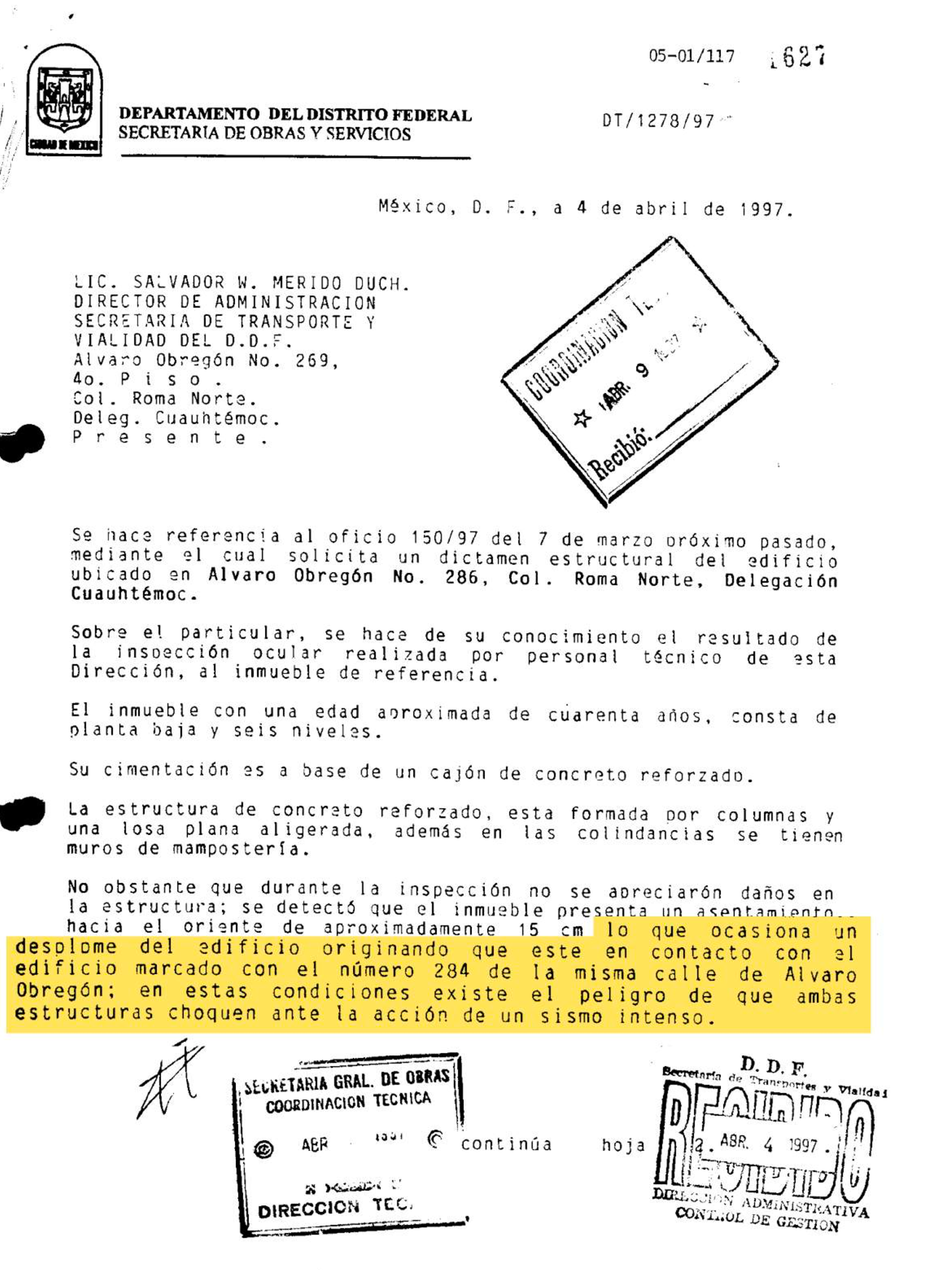Regulation: The Accumulation of Irregularities of AO286
Spatial Scale: Architectural
Temporal Scale: Split Second
Considering the evolution of the MCBC, AO286 was built with the 1957 Emergency Building Code, yet the regulations for constructions were updated six times before it collapsed on the 19S earthquake of 2017. This final step reconstructs AO286 with available sources to highlight these irregularities and the point in time in which they became noncompliant with current codes.
BASIC INFORMATION ON AO286, MCBC 2016
- Soil Zonation: IIIa
- Building Classification: B1 Case 6, +3,000m2 and office use in Zone IIIa
- Maximum Storey Drift: 132 mm (H = 22.00 m. w/ error +/-0.50 m.)
- Minimum Adjacent Separation with AO284 (H = 12.00 m.) : 242 mm.
Based on the 2016 MCBC, valid when AO286 collapsed, a number of irregularities were identified, which are enlisted and shown in the following architectural plans, each coded with a number that is also shown on the drawings.
ARCHITECTURAL IRREGULARITIES OF AO286, MCBC 2016:
1) Change of Use: (Art. 184) AO286's construction and structural design in 1959 was approved for housing use, however, existing floor plans show it was used for offices, which require higher live load calculations. No evidence exists that the building was restructured to resist its change of use.
2) Adjacent Building Separation: (CTN for Seismic Design, 1.10) AO286's minimum separation with AO284 should have been 242 mm. Photos reveal the distance to have been shorter than 50mm, the minimum distance the MCBC demands. Additionally, the 1997 report states that both buildings were in contact with each other. (Art. 176) No evidence exists that the 1997 observation was ever corrected in AO286, a B1 subclass building.
3) Regional Subsidence: (Art. 178) At the time it collapsed, the effect of subsidence on AO286 had been observed for more than 20 years, however it was never reported to authorities.
4) The 6th Slab: (CTN for Seismic Design + Art. 184) No evidence exists that AO286's modifications to its 6th slab, which were detailed above, were endorsed by a Correspondent for Structural Safety.
5) The 7th Storey: (CTN for Seismic Design + Art. 184) No evidence exists that AO286's addition of a 7th storey, between 1994-1997, was endorsed by a Correspondent for Structural Safety.
6) Guard Rail: (CTN for Seismic Design + Art. 184) The pre-existence of a low-rise wall, characteristic of roof guard rails on RC structures such as AO286, is visible on photographs of 6th storey, further supporting the hypothesis that this was once the building's topmost level.
7) Raised Water Tanks: (CTN for Seismic Design + Art. 184 + Art. 143) No evidence exists that the addition of eleven water tanks on the 7th slab, increasing a punctual load of approximately 12.1 Ton., was calculated as part of the modifications to AO286. This creates an inverted pendulum effect, exacerbated during seismic events, which needs to be accounted for in any building's structural design and endorsed by a Correspondent for Structural Safety.
8) Covering of Western Ventilation and Illumination Shaft: (CTN for Seismic Design + Art. 184) A video of the collapse and testimonies of rescuers state that the western ventilation and illumination shaft was restructured and covered in the first, second, and third storeys to create space for restrooms in the first and second storey. No evidence exists that this modification was endorsed by a Correspondent for Structural Safety.

